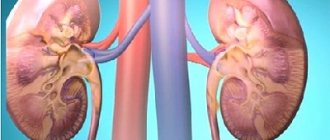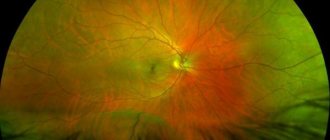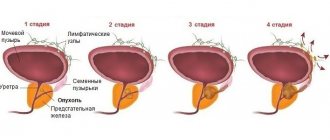Nephritis (glomerulonephritis)
is a condition in which the kidney tubules and nearby tissue become inflamed, which can lead to kidney damage. When the kidneys are damaged, they stop working properly. The waste accumulates and causes serious health problems. If this condition lasts long enough, it can lead to kidney failure.
To understand kidney problems such as nephritis, it is helpful to start with kidney function. Kidneys
- bean-shaped, fist-sized organs that are located under the ribs on the left and right sides of the spine. They remove waste and excess fluid from the blood and filter 120-150 liters of blood daily. Each kidney is made up of thousands of structures called nephrons, where blood is filtered. In nephrons, the purification process is two-stage.
A filter called the glomerulus, which traps blood cells and protein and sends fluid and waste to a second filter called the tubule. The tubules separate the minerals and whatever remains is excreted from the body as urine.
Jade shapes
Acute glomerulonephritis.
This form of nephritis can develop suddenly after a serious infection such as tonsillitis, hepatitis or HIV. It can be caused by lupus and less common diseases such as Goodpasture's syndrome or Wegener's granulomatosis. Glomerulonephritis requires prompt medical attention to prevent kidney damage.
Alport syndrome.
This disease can lead to kidney failure, as well as vision and hearing problems. The disease is usually hereditary and is more common in men.
Chronic glomerulonephritis.
It develops slowly and has few symptoms in the early stages. This disease can lead to severe kidney damage and kidney failure.
IgA nephropathy (Berge's disease).
One of the most common forms of nephritis, besides those associated with diseases such as diabetes and lupus. The disease develops when deposits of antibodies form in the kidneys and cause inflammation. Men are more often affected than women; the disease rarely occurs in young people, as early symptoms are easy to miss. It is often treated with blood pressure medications.
Interstitial nephritis.
This form of nephritis develops quickly and is usually caused by drugs or infection. The disease affects a part of the kidney known as the interstitial tissue. If patients begin treatment quickly, full recovery is possible within a few weeks.
There are many causes of nephritis, which in some cases are not clear. Nephritis and kidney disease have a possible genetic link. Infections such as HIV and hepatitis B or C can also cause nephritis.
60% of patients diagnosed with lupus (an autoimmune disease) develop nephritis. As a result, there may be a link to immune system problems.
In some cases, medications such as antibiotics can damage the kidneys, leading to nephritis. Taking non-steroidal anti-inflammatory drugs (NSAIDs) can also cause nephritis.
Physiotherapy for nephritis
Physiotherapeutic procedures for nephritis give excellent results:
1. Electrophoresis normalizes vascular tone. This allows you to achieve normal blood circulation at the site of the disease. Electrophoresis also promotes better delivery of nutrients and oxygen to tissues and removal of metabolic products from there. In this way, the following effects are achieved: drugs act more actively, their effect lasts longer, the drug component is less absorbed into the blood, so smaller dosages can be used.
2. Galvanization and stimulation with sinusoidal modulated currents. Such procedures improve the condition of the muscles of the ureter and pelvis, as a result, the outflow of urine returns to normal, stasis is stopped, and new kidney stones do not form.
3. Magnetotherapy using a low-frequency magnetic field allows medications to be quickly absorbed into the skin and the deepest layers, where the therapeutic effect is precisely needed. Magnetic waves stimulate immune mechanisms and enzymatic reactions. This leads to the fastest possible relief of inflammation. In addition, a beneficial effect of the magnetic field on nerve endings has been noted, therefore, this procedure eliminates pain.
4. Thermotherapy or dry heat treatment. The procedure is indicated for chronic disease. For such treatment, rooms that resemble a sauna are used.
Treatment of nephritis
Treatment for nephritis depends on whether the disease is acute, chronic, or associated with other diseases such as lupus.
Acute jade
sometimes it goes away on its own. Treatment is carried out using medications and special manipulations to remove excess fluid and dangerous proteins.
Treatment of chronic nephritis
includes regular checkups and blood pressure monitoring. Your doctor may prescribe medications to control your blood pressure and reduce swelling. Doctors may also recommend dietary changes, such as reducing protein, salt, and potassium intake.
Acute episodes of nephritis respond well to treatment. Sometimes, years after an acute episode, people develop chronic glomerulonephritis. Although these diseases are not always curable, proper treatment can keep the disease under control and protect the kidneys. It is important to follow your doctor's directions to prevent and limit kidney damage.
When kidney failure occurs, the best options are dialysis or kidney transplantation. Dialysis removes waste and excess fluid and maintains safe levels of chemicals in the blood.
To prevent nephritis, you should maintain a healthy weight, quit smoking, monitor your blood pressure and blood sugar levels, and exercise. A healthy diet can protect kidney health.
Nutrition rules for nephritis
nutrition for nephritis
The purpose of the diet depends on the stage of the disease. If it has become chronic, but all kidney functions are normal, then you can eat as usual. Strict diets are not required here. It is only important to minimize the consumption of salt, liquid and protein. This allows you to avoid overloading the kidneys, in which case new stones will not appear.
It is necessary to get enough calories, so proteins, fats and carbohydrates must be balanced. In the chronic form of jade, so-called fasting days, for example, on apples, cucumbers or watermelons, are especially useful.
If you have been prescribed a diet, then you need to adhere to the following recommendations:
1. Bread should be consumed with the least amount of salt; it should not be added to pancakes or pancakes.
2. Meat is necessary, but it should be lean types. For example, lean beef, trimmed pork, chicken or rabbit, and veal are suitable. Cooking methods: boiling, baking.
3. Low-fat fish, any preparation is acceptable.
4. Dairy and fermented milk products and drinks.
5. Eggs. They can be fried or boiled, but it is not recommended to eat more than 2 pieces per day.
6. Vegetables, berries and fruits are suitable in a variety of forms and in any form, honey and nuts are also acceptable.
7. Drinks. You can drink tea, vegetable and fruit juices, decoctions of rose hips, lingonberries, and strawberries.
For nephritis, there is a list of prohibited foods. The very first thing in it is salt. Its consumption must be reduced in every possible way. The same applies to vegetable protein, which greatly irritates the kidneys. Also, do not drink alcohol, strong coffee, hot chocolate, mineral water, smoked meats, marinades and fermented foods. The kidneys suffer greatly from the listed foods and drinks.
Physical activity and rest
In cold and damp seasons, it is recommended to wear woolen stockings or socks, as well as warm underwear. Shoes should be warm and dry. Young people should not completely protect themselves from physical stress. But the load is only useful when it does not cause feelings of fatigue, shortness of breath, or palpitations. They can take short walks.
However, games in teams where the patient is involuntarily drawn into the pace characteristic of practically healthy people are prohibited. We have repeatedly observed an exacerbation of nephritis after excessive exercise. It is better to take vacations for those suffering from nephritis in the warm season. Such conditions are especially necessary for patients who often experience swelling. If the patient tolerates the heat well, his swelling quickly goes away even without special treatment and taking diuretics.
Those with high blood pressure, elderly people, and those with a significant delay in protein metabolism products in the body should not go to the south: there their condition will only worsen. They benefit from sanatorium treatment in their familiar climate zone.
Why take a urine test if nothing hurts anymore?
In 10-30 percent of patients, acute nephritis becomes chronic. Therefore, for those who have suffered from kidney inflammation, it is so important to systematically do urine tests. This makes it possible to identify incipient chronic nephritis even if all manifestations of the disease disappear and only characteristic changes in urine remain.
Sometimes the main symptoms of chronic nephritis are:
- swelling or high blood pressure accompanied by headache;
- dizziness;
- flashing “flies” before the eyes.
Those suffering from chronic nephritis, even during a period when they do not have an exacerbation, should remember their disease. Such people usually remain able to work only if their activities are not associated with significant physical exertion or hypothermia. They should avoid overwork; it is recommended to take walks in the fresh air more often.
Treatment
Therapy for chronic nephritis, which occurs in a latent form while maintaining sufficient organ function, is limited to the following measures:
- normalization of sleep patterns and mandatory rest;
- diet: exclusion of alcohol, salt, canned food and spices. The mixed type of disease requires a rice diet. If nephritis manifests itself as persistent swelling, a dairy diet is recommended;
- maintaining normal bowel function.
If there is an infectious focus in the body - sinusitis, otitis, tonsillitis, antibacterial therapy is required. Exacerbation of the disease requires hospital treatment and strict bed rest. In such cases, a complete exclusion of salt, a large amount of vegetables and protein foods are indicated.
Chronic nephropathic nephritis is treated with cytotoxic drugs and corticosteroids. To reduce swelling, diuretics (Hypothiazide, Furosemide) are prescribed. For the treatment of chronic nephritis of mixed and hypertensive types, Indomethacin and Chloroquine are used, and antihypertensive medications such as Reserpine are also effective.
If a patient is diagnosed with uremic acidosis due to nephritis, alkalis and physiotherapy using alkaline-salt solutions are prescribed. Subcutaneous administration of glucose has proven its effectiveness: it counteracts uremic intoxication. Additionally, vitamin complexes and medications that improve tissue trophism may be prescribed.
Nephritis in children
In babies who were born healthy and undergo regular examinations in a medical facility, the development of chronic nephritis is almost impossible. However, in some cases, a diagnosis of “non-hereditary nephritis” may be made. Often the disease appears for no apparent reason. This makes treatment much more difficult. Therapy during periods of exacerbation is carried out only in a hospital setting.
Nephritis in children can develop against the background of other diseases
Nephritis in children can also be acquired. The disease develops against the background of the following congenital or acquired pathologies:
- diabetes;
- tuberculosis;
- immunodeficiency states;
- diseases of the circulatory system;
- oncological diseases.
The disease manifests itself in the same way as in adult patients. However, kids cannot tolerate the deterioration of their health. They become moody, irritable, and sleep is disturbed. There may be a delay in physical and mental development.
Therapy also involves diet and taking the groups of medications described above. Medicines are selected taking into account the age characteristics of the patient.
Forecast and consequences
Chronic nephritis cannot be completely cured. However, if you follow the specialist’s instructions and timely seek help for any negative symptoms, you will be able to achieve stable remission.
Refusal of treatment often leads to the development of serious complications, such as:
- renal failure;
- severe form of hypertension;
- development of atherosclerosis;
- increased susceptibility to infectious diseases against the background of decreased immunity.
A patient with chronic nephritis will have to make some lifestyle adjustments. You should avoid professional sports and any exercise that involves excessive physical activity. But special gymnastics, on the contrary, will be beneficial. The possibility of performing exercises should be discussed with your doctor.
Before pyelonephritis, I regularly visited the gym. I had to give up classes for six months. But I continued to lead an active lifestyle, walking a lot. There were no global changes in physical fitness.
Video: gymnastics for the kidneys
Jade is an amazing stone
Jade: types, description, properties and uses of an amazing stone
Jade is one of the most mysterious minerals on Earth. It is difficult to break, so many ordinary people consider it a space stone. In addition to the strength itself, it has a unique appearance: jade can be striped or spotted. Most often in nature, light stones are found: yellowish, with a green tint, but there are also ones similar to emerald. Black jade is considered the rarest and most unique.
According to historical notes, black jade began to be mined in China, believing that it was fragments of a once fallen meteorite. Contrary to the stories, this is an ordinary earthly rock that has changed color due to strong soil pressure and special weather conditions, but how many rumors has it given rise to...
Today this breed defends the interests of medicine, design and jewelry.
Basic properties of jade
Scientists continue to research this breed, considering it amazing and incredible. Already today, the stone is used in saunas, massage treatments, to create jewelry and decorative items, in the production of furniture, and in the design of gardens, parks and houses. The mechanical strength of the material allows it to be used to make the most durable products that serve their owners for decades.
In esoteric culture, the stone is considered unusually strong; it saves from many diseases, resurrects the aura, and restores vitality. This is true, however, all procedures will be discussed later in the article from a purely scientific point of view.
Applications of jade stone
For medicinal purposes, jade is used for body massage and in saunas or baths. Research claims that carrying a stone with you also helps with various diseases; it has been found that the stone increases life expectancy and significantly improves its quality.
Stone treatment or stone therapy is the effect on human skin using heated stones or mineral massagers. Small jade products allow you to massage yourself at home with great health benefits. The cost of real jade cannot be called low, but its strength and long service life completely pay for it. The stone should be used for the following purposes:
- Improved blood circulation. Jade itself has the property of increasing blood circulation. Combined with massage movements, the effect is enhanced; the desired result can be achieved in a shorter time.
- Skin regeneration. The process can be called a direct consequence of the previous paragraph. Thanks to the blood flow to the capillaries, the epidermis and other layers of the skin receive more nutrients. The complexion improves, wounds heal faster, and old scratch marks disappear.
- Relieving the feeling of constant fatigue. With stress at work and at home, under conditions of constant workload and tension, fatigue accumulates unnoticed, after which it leads to apathy and depression. A five-minute massage with a jade stone will help relieve daytime stress and improve the quality of your sleep.
- Headaches, frequent migraines. There are many reasons for these problems and they are different for everyone, but jade helps with them all. The massage should be concentrated around the eyeballs, occipital and temporal parts of the head. The impact on the cervical region and the area behind the ears also brings tangible results.
The use of jade in baths and saunas
Many stones are recommended for use in steam rooms, but the emphasis is on jade and jadeite. There are a lot of factors in favor of the first one:
- Strength. The service life of the mineral is unlimited even with intensive use. It easily tolerates temperature changes and is not susceptible to temporary corrosion.
- Unlike cheap soapstone and other analogues, jade has the highest heat capacity. This means that the sauna owner will be able to save significantly on steam equipment and firewood.
- The stone can be heated over an open fire, this is its difference from jadeite. Also, jade has many properties that are beneficial to everyone's health. A bath with jade stones is an excellent remedy for the treatment of kidney diseases.
For good heat and activation of beneficial properties, it is enough to purchase several large stones.
Jade in landscape design
The mineral is suitable for the production of slabs, decorative items, framing the banks of ponds and swimming pools. Some types of stone have a translucent structure, which is good for diffusing light and creating partitions.
Much has already been said about the properties of jade. In this section, it is enough just to remind you of the high strength of the material; in addition, it is worse than other stones and is overgrown with moss and algae. To decorate garden ponds, minerals of green and bluish hues are used, as they are in perfect harmony with the other elements of the composition.
The use of jade in industrial construction is not justified due to the high cost of raw materials, however, when constructing private houses, it is quite possible to use stone both for finishing and for strengthening some particularly important structural elements.
Jade Jewelry
Rings, necklaces and bracelets containing this mineral are popular among men and women of different ages. The products have a respectable appearance and are suitable for wearing to various events. Jade is difficult to scratch or damage its structure in any way, so jewelry is bought to last forever. Those who wear the mineral experience improved well-being, increased tone and libido.
After reading the article, it seems that all of humanity’s problems stem from the lack of pieces of jade for everyone personally. Of course, this is not true, but within one person you can correct the situation. The miraculous effect will not be long in coming, and you can buy jade of different colors and textures with the help of our consultants.
Symptoms of the disease
Chronic inflammation can be present in the body for a long time without any complaints. Most patients with this diagnosis quickly get tired, often feel drowsy, and complain of dull skin and excessive hair loss. However, such symptoms can be attributed to vitamin deficiency. Few people seek help in a timely manner.
Hypothermia or a stressful situation leads to an exacerbation of the disease. The first sign of inflammation in this case will be acute pain in the lumbar region. Body temperature rises. In the presence of bacterial agents in the kidneys, the thermometer mark can reach 40 °C. Against this background, symptoms of general intoxication of the body arise - headache, joint pain, nausea. You must seek help immediately.
High blood pressure may occur due to kidney problems
In the first few days after the onset of an exacerbation, diuresis may be impaired - the amount of urine excreted decreases. At the same time, excess fluid begins to accumulate in the tissues of the body. Patients with chronic nephritis often experience morning swelling (nephrotic syndrome).
Hematuria is another common sign of a pathological process. Urine takes on the hue of “meat slop” due to the presence of blood in it.
The kidneys take part not only in removing fluid from the body. This organ also affects the functioning of blood vessels. In hypertensive or mixed forms of the disease, a significant increase in blood pressure will also be observed. At the same time, it is quite difficult to normalize it with the usual antihypertensive drugs. Changes characteristic of hypertension begin to appear in the body. A person complains of frequent headaches and a tendency to thrombosis appears.
A friend of mine with chronic nephritis suffered from headaches for a long time. After a comprehensive examination, it turned out that the cause was arterial hypertension caused by impaired kidney function.
Features of treatment of the disease
Most often, acute nephritis can be eliminated quickly, in one to two months, if bed rest and diet are followed, and anti-infective treatment is carried out. I would especially like to emphasize that bed rest is necessary even with a mild course of the disease, since due to the diet the patient’s nutrition is limited, the strength of the body is weakened by the painful process. And, most importantly, in a horizontal position, blood circulation in the kidneys is facilitated. In about a third of patients, nephritis becomes protracted, and then bed rest must be maintained for one and a half to four months.
The room where the patient lies should be dry and warm. Smoking is prohibited. Alcohol is strictly prohibited! In our experience, it dramatically worsens the condition of patients.
Causes of nephritis
- Nephritis can occur after a sore throat, catarrh of the upper respiratory tract, scarlet fever, and less often after other infectious diseases.
- Sometimes the pathological process develops in people who are hypersensitive to antibiotics and some other drugs.
- Hypothermia, mainly wet cold, and overwork contribute to the occurrence of jade. But their effect in most cases manifests itself on prepared soil.
Clinical observations and studies of microbial flora taken from patients from the nasopharynx give reason to believe that some types of streptococci have the most pronounced pathogenic effect. And, in addition, the occurrence of nephritis is due to certain characteristics of the state of the human body, its predisposition to this disease. Doctors call this condition sensitization (increased sensitivity) of the body to microbes entering it. Such sensitization occurs due to previous repeated sore throats and other streptococcal diseases.
As you know, the body responds to the introduction of microbes with a protective reaction, the production of special antibodies. As a result of immunological studies, it was possible to establish that the proteins of kidney tissue are extremely similar in structure to the proteins of some types of pathogenic microbes. That is why the protective antibodies produced by the body damage not only them, but also the kidney tissue. This contributes to the development of inflammation in it.
Diagnosis of chronic nephritis
The disease can manifest itself with many symptoms. Therefore, an accurate diagnosis can only be made through a comprehensive examination. In their work, nephrologists use the following techniques:
- Patient interview. The doctor finds out when the first complaints appeared, what preceded them, and whether you have had to deal with kidney inflammation before. If the patient is undergoing treatment for other diseases, this should also be reported to the specialist.
- Blood chemistry. An increase in creatinine and urea levels can reveal renal dysfunction. The development of the disease will also be indicated by a decrease in the level of protein in the blood (the substance is excreted in large quantities along with urine).
- General urine analysis. Impaired kidney function will be indicated by an increase in protein levels in the test fluid.
- Ultrasound of the kidneys. The study allows you to determine the localization of inflammation and identify neoplasms.
- Renal tomography (CT or MRI). The study is carried out if malignant tumors are suspected.
- Kidney biopsy. With the help of a puncture, the doctor is able to assess the structure of the affected tissue.
- X-ray of the kidneys. The study also allows us to determine the localization and form of the inflammatory process.
- Zimnitsky's test. The technique makes it possible to identify the ability of the kidneys to concentrate urine. The patient needs to collect urine throughout the day in 8 separate containers (every three hours). In laboratory conditions, the amount of urine and its density are determined.
A general urine test can make a preliminary diagnosis.
To carry out differential diagnosis, the patient may additionally be referred for consultation to a surgeon and therapist. If you suspect a malignant kidney tumor, you must undergo examination by an oncologist.








